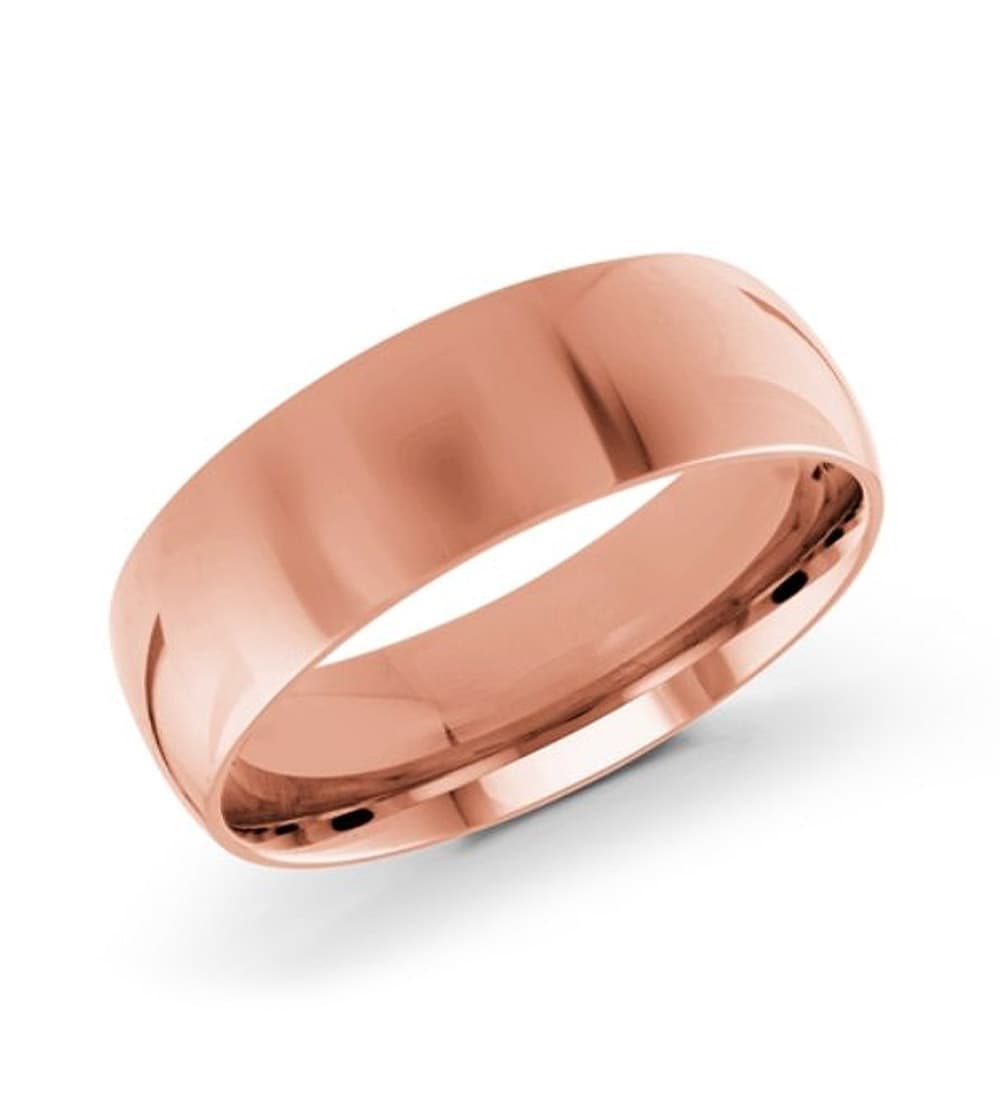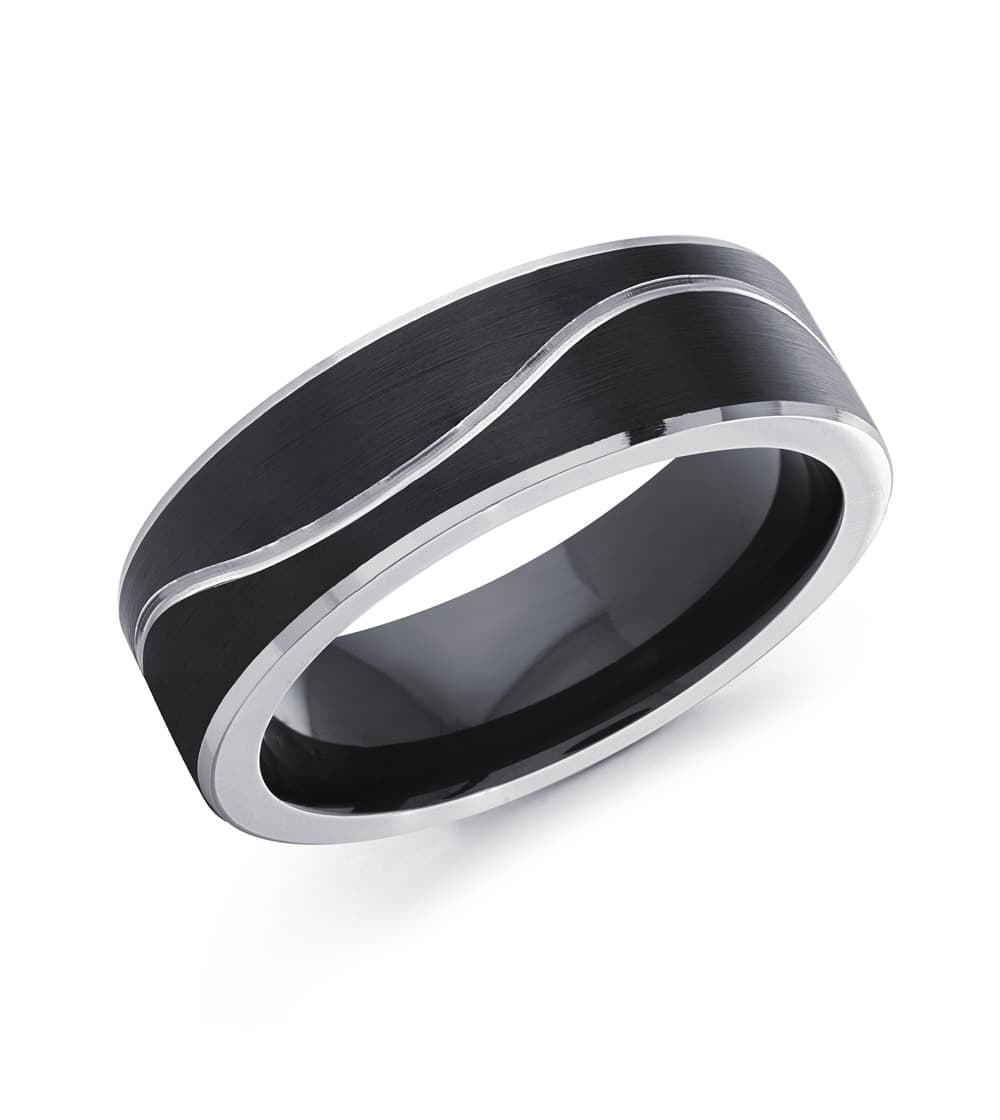Jewelry Materials Guide
Luvari offers several different wedding ring materials, and each one has a unique set of pros and cons. To help you on your wedding ring journey, take a look at some of the pros and cons of each wedding ring material as well as an overview of its characteristics.
| Platinum | Palladium | Gold | Silver | Titanium | Tungsten | Cobalt | Ceramic | Tantalum | |
|---|---|---|---|---|---|---|---|---|---|
| Precious Metal | |||||||||
| Color | White | White |
Yellow Rose White |
White | Grey |
Color Options |
Color Options |
Color Options |
Color Options |
| Scratch Resistance | Low | Low | Low | Low | Medium | High | Medium | High | High |
| Durability | Strong | Strong | Malleable | Malleable | Strong | Brittle | Strong | Brittle | Strong |
| Weight | Heavy | Mid-Weight | Mid-Weight | Light | Light | Heavy | Light | Light | Heavy |
| Resizable | |||||||||
| Price | |||||||||
| Hypoallergenic |

Platinum
Platinum is a semi-rare, silvery-white precious metal. It is one of the stronger precious metal options and usually considered the most luxurious. Since the metal is rare, it is the most expensive wedding ring option as well. It is also an incredibly dense metal, making it heavier than other materials.
Platinum is more durable than gold but not as durable as palladium and some of the non-precious metals like tungsten and titanium. However, if it does get scratched, the metal is simply displaced rather than lost, meaning the ring will never lose density.
With platinum, you can avoid regular ring maintenance. However, be aware that the ring may develop a patina over time, which you can have polished away if you want.
Palladium
Palladium is almost identical to platinum in color. It also is similar to platinum in rarity and durability, but palladium is a bit more durable than platinum. Palladium also displaces metal instead of losing it, but it won’t scratch quite as easily as a platinum ring. It is also less dense, making it a great lightweight metal option.
Like platinum, palladium can develop a patina over time but requires little to no maintenance otherwise.
The price of palladium varies. It is less expensive than platinum but more expensive than most other precious metals.


Yellow Gold
Yellow gold is what you typically picture when you think of gold. It is a rich yellow metal that is fairly soft, which means it has to be mixed with other metals to make it durable enough for everyday wear. Gold alloys are determined by karats (not to be confused with carat, or diamond weight). The higher the karat, the higher the gold content—out of 24 karats. So 18K gold is 18 parts gold and 6 parts another material (usually a mix of copper, zinc, and silver).
The durability of gold depends on the karat, with higher karat gold being softer and more prone to scratches. This means that 10K gold is the most durable gold option. However, all gold jewelry will need to be polished regularly to buff out scratches and dings.
The price of gold also depends on the karat. High gold content is more expensive than low gold content. However, gold jewelry is generally much more affordable than platinum and palladium.
White Gold
White gold is a gold alloy that is dipped in a rhodium plating, which is what gives it its bright white color. The pure gold is mixed with copper, zinc, and nickel and has a similar durability level as yellow gold.
White gold is prone to scratches like yellow and rose gold, but it can also fade and turn slightly yellow as the rhodium plating wears off. Because of this, a white gold ring will need regular replating as well as polishing to retains its white shine.
The price of white gold depends on the gold content, but it is usually about the same as yellow or rose gold.


Rose Gold
Known for its pink color, rose gold is an alloy of gold mixed with copper and zinc. Its high copper content is what gives it its well-known romantic hue.
Rose gold is susceptible to scratches and dings like other gold materials, but due to the higher amounts of copper, it is the most durable of the gold family. It does still require regular polishing depending on karat and wear.
The price of rose gold is comparable to other gold materials.
Silver
Like gold, pure silver is too soft to use in jewelry, so it is mixed with other materials to help it withstand day-to-day wear and tear. Luvari uses 925 silver, which is more durable than other options and is a bright white color.
Sterling silver is known to tarnish when exposed to certain elements. The silver we use resists tarnishing but may still develop it over time. Luckily, tarnish is easy to remedy. Silver can be polished to remove tarnish and restore its shine. Regular polishing is also important to remove scratches and dents that develop from everyday wear.
Silver is by far the least expensive precious metal available and is even less expensive than many non-precious metals as well.


Titanium
Titanium can be white, gray, or even black depending on how it’s made. Our titanium jewelry is usually a gunmetal gray or silvery white.
Titanium is an incredibly durable metal, and we use aircraft-grade titanium to increase the durability even more. Titanium is the third strongest wedding ring material, behind tungsten and ceramic. However, it is incredibly lightweight, about three times lighter than gold. Unfortunately, because of its strength, titanium rings can’t be resized.
Titanium is also incredibly affordable, less expensive than gold and other white metals.
Tungsten
The appearance of tungsten can vary much like titanium but is usually dark gray, white, or black. It is also a dense metal, so it weighs more than gold and titanium.
Tungsten is at the top of the ladder in terms of durability, being about four times stronger than titanium. This makes it the most durable wedding ring metal available. However, it is also brittle, which makes it prone to shatter if heavily impacted. It is also impossible to resize because of its strength and brittleness.
The price of tungsten is usually the most affordable option for a wedding ring, which makes it a great choice for strength and price.


Cobalt
Cobalt has the closest appearance to white gold but with five times more durability. Its white shine can easily be mistaken for other metals like platinum, palladium, or white gold.
As for strength, cobalt is one of the better options for durability, though not as strong as tungsten. It is impossible to resize but weighs significantly less than other pure metals, like platinum and tungsten. Cobalt rings can be polished to remove scratches and dents.
Cobalt is another affordable metal option, similar in price to titanium and tungsten.
Ceramic
Ceramic rings are the most versatile option in terms of color. They can be made to be black, white, gray, or even pink. They also retain their color and shine long-term.
Ceramic is the most durable material for wedding rings, even more so than tungsten. It is also less brittle than tungsten (though still more brittle than other options). Like other durable materials, ceramic can’t be resized or engraved. But it can be combined with other materials like wood to create unique looks.
Ceramic is less expensive than precious metals and is generally affordable.


Tantalum
Tantalum is a cutting-edge metal that is growing in popularity in the wedding ring industry thanks to its rarity, durability, and unique color. Normally, you’ll find tantalum in light to dark gray, but it also often has a blue undertone that makes the color really pop.
This metal is also incredibly durable and resistant to scratching, which makes it a great choice for active lifestyles and low maintenance. However, unlike other durable metals, tantalum is easy to work with. So you can easily add fun details or resize your ring down the road.
Tantalum is a rare metal, and many suspect the supply will run out within the century. That means that it is more expensive than other industrial metals, though it’s still less expensive than precious metals like platinum.

